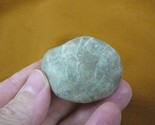Rendered at 10:22:10 10/07/25
Envío gratis
(F831-213) 1-3/4" unpolished Petoskey stone fossil coral specimen MI state rock
Los buques de
United States

Share & earn! Sign in, share this or any listing, and you’ll get commission when it sells.
Learn more
Las opciones de envío
Política de oferta
OBO - El vendedor acepta ofertas en este artículo.
Detalles
La política de devoluciones
Full refund available within 30 days
Protección de compra
Opciones de pago
PayPal accepted
PayPal Credit accepted
Venmo accepted
PayPal, MasterCard, Visa, Discover, and American Express accepted
Maestro accepted
Amazon Pay accepted
Nuvei accepted
Las opciones de envío
Política de oferta
OBO - El vendedor acepta ofertas en este artículo.
Detalles
La política de devoluciones
Full refund available within 30 days
Protección de compra
Opciones de pago
PayPal accepted
PayPal Credit accepted
Venmo accepted
PayPal, MasterCard, Visa, Discover, and American Express accepted
Maestro accepted
Amazon Pay accepted
Nuvei accepted
Rasgos del artículo
| Categoría: | |
|---|---|
| cantidad disponible: |
Sólo uno en stock, para muy pronto |
| Condition: |
New |
| Material: |
Stone |
| Country of Manufacture: |
United States |
Detalles del anuncio
| Envío de descuento: |
Vendedor paga el envío para este artículo. |
|---|---|
| Publicado en venta: |
Más de una semana |
| Artículo número: |
1394273483 |
Descripción del Artículo
(Internal # F831-213) This is a medium, genuine Petoskey fossil coral stone, unpolished specimen, average 1-3/4 to 1-7/8" long.
Petoskey stones are a gray color, coated with baby oil to show off pattern.
What you see in to photo is what you get.
PETOSKEY STONES
THE ROCK THAT'S ACTUALLY A FOSSIL!
(Fossil coral, Hexagonaria percarinata)
This is fossil coral, with a beautiful honeycomb pattern, fairly soft at Mohs 3 on the hardness scale. Michigan's State Rock. Antrim County MI holds a Petoskey Festival each year. Formed when Michigan was covered by a sea in which coral reefs thrived, the coral gradually became buried by sediment, which turned into limestone and shale. The skeletons were replaced by calcite (calcium, carbon oxygen).
The soft living tissue of the corallite was called polyp. At the center of the polyp was the food intake opening or mouth. This dark spot, or the eye of the corallite, has been filled with silt or mud that petrified after falling into the openings. Surrounding the opening were tentacles that were used to gather food and draw the food into the mouth. The living corallite thrived on plankton which lived in the warm sea. The Petoskey stone is also known as a colony coral.
During the Ice Ages, from 1.6 million to 10,000 years ago, glaciers scraping over Michigan broke up soft, fossil-bearing rocks. The pieces were carried along and dropped, now found along lake beaches, road cuts, and gravel pits as rounded stones from pebble size to potato-sized lumps. Dated to 350 million years old (Devonian period). Found on the shores of Little Traverse Bay from the northwestern tip of the Lower Peninsula, especially around Petoskey and Charlevoix, Michigan.
The name "Petoskey" comes from an Ottawa Indian chief. When he was born, sunbeams fell upon his face so he was named Pe-tos-e-gay ("rising sun"). European settlers Anglicized the name as Petoskey.
WE SHIP WORLDWIDE, see the chart for postage to your country.
Click on our Store tag for SIMILAR items.
Added to your wish list!

- (F831-213) 1-3/4" unpolished Petoskey stone fossil coral specimen MI state rock
- 1 in stock
- Price negotiable
- Handling time 1 day. Estimated delivery: Wed, Oct 29th
- Returns/refunds accepted
Get an item reminder
We'll email you a link to your item now and follow up with a single reminder (if you'd like one). That's it! No spam, no hassle.
Already have an account?
Log in and add this item to your wish list.



